Related Research Articles
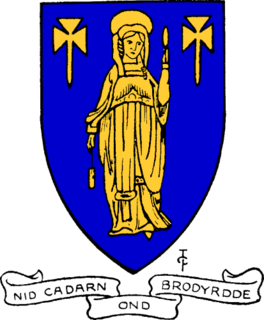
Merthyr Tydfil is the main town in Merthyr Tydfil County Borough. The town is administered by Merthyr Tydfil County Borough Council and is about 23 miles (37 km) north of Cardiff, Wales. The town has a population of 43,820.
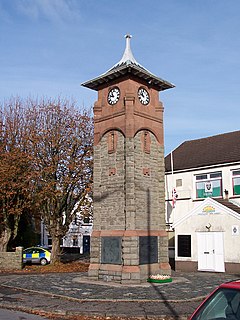
Hirwaun is a village and community at the north end of the Cynon Valley in the County Borough of Rhondda Cynon Taf, South Wales. It is 4 miles (6 km) NW of the town of Aberdare, and comes under the Aberdare post town. At the 2001 census, Hirwaun had a population of 4,851. increasing at the 2011 census to 4,990. The village is on the Heads of the Valleys Road and at the southern edge of the Brecon Beacons National Park.
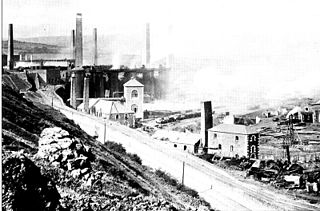
The Cyfarthfa Ironworks was a major 18th- and 19th-century ironworks in Cyfarthfa, on the north-western edge of Merthyr Tydfil, in South West Wales.

The Dowlais Ironworks was a major ironworks and steelworks located at Dowlais near Merthyr Tydfil, in Wales. Founded in the 18th century, it operated until the end of the 20th, at one time in the 19th century being the largest steel producer in the UK. Dowlais Ironworks were the first business to license the Bessemer process, using it to produce steel in 1865. Dowlais Ironworks was one of the four principal ironworks in Merthyr. The other three were Cyfarthfa, Plymouth, and Penydarren Ironworks. In 1936 Dowlais played a part in the events leading to the abdication crisis of Edward VIII, when the King visited the steelworks and was reported as saying that "these works brought these men here. Something must be done to get them back to work", a statement which was seen as political interference. The steelworks finally closed in 1987.

Dowlais is a village and community of the county borough of Merthyr Tydfil, in Wales. At the 2011 census it had a population of 6,926, reducing to 4,270 at the 2011 census having excluded Pant. Dowlais is notable within Wales and Britain for its historic association with ironworking; once employing, through the Dowlais Iron Company, roughly 5,000 people, the works being the largest in the world at one stage.
This article is about the particular significance of the year 1804 to Wales and its people.

Canolfan Soar is a Grade II-listed community facility in Merthyr Tydfil that includes a theatre and other facilities. It was converted from the closed Grade II-listed, eighteenth-century, Zoar Chapel in the first decade of the twenty-first century.

Merthyr Tydfil County Borough has been one of the 22 unitary authorities in Wales since 1 April 1996. Merthyr Tydfil County Borough today has a population of 60,183. It is located in the historic county of Glamorgan and takes its name from Merthyr Tydfil town. The County Borough consists of the northern part of the Taff Valley and the smaller neighbouring Taff Bargoed Valley. It borders the counties of Rhondda Cynon Taf and Caerphilly county borough.

Calfaria Baptist Chapel, Aberdare, was one of the largest baptist churches in the South Wales Valleys and the oldest in the Aberdare valley. The chapel had an ornate interior, including a boarded ceiling with a deeply undercut rose, while the balcony balustrading had a cast iron front with an intricate foliage design. These features were common in the Welsh chapels of the late nineteenth century. The organ was installed in 1903 at a cost of £850. It was played for the last time in 2012 by Robert Nicholls, during a Radio Cymru broadcast shortly before the closure of the chapel.

Siloa, Aberdare was the largest of the Welsh Independent, or Congregationalist, chapels in Aberdare. Services are held in the Welsh language. Established in 1844, Siloa is one of the few Welsh language chapels in the locality to remain open today. Siloa was notable for its long-serving ministers and in over a century there were only three pastorates, namely those of David Price (1843–78), D. Silyn Evans (1880–1930) and R. Ifor Parry (1933–64).
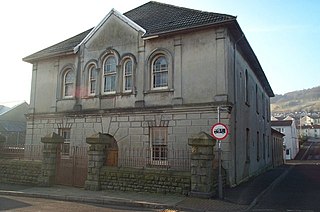
Saron, Aberaman was a Welsh Independent (Congregationalist) chapel in Davies Street, Aberaman, formed as an initiative of the David Price of Siloa, Aberdare, soon after the development of Aberaman as an industrial settlement as a result of the activities of Crawshay Bailey and David Davis, Blaengwawr. Saron was claimed to be the largest chapel in the Cynon Valley although Calvaria, Abercynon, Ebenezer, Trecynon and Siloa, Aberdare all had a similar capacity.
Ebenezer, Trecynon is an Independent (Congregationalist) chapel in Ebenezer Street, Trecynon, Aberdare, Wales. It was one of the earliest Independent chapels in the Cynon Valley and remained an active place of worship until 2009.
Horeb, Llwydcoed is an Independent (Congregationalist) chapel in Llwydcoed, Aberdare, Wales.

Nebo, Hirwaun was an Independent (Congregationalist) chapel in Merthyr Road, Hirwaun, Aberdare, Wales.
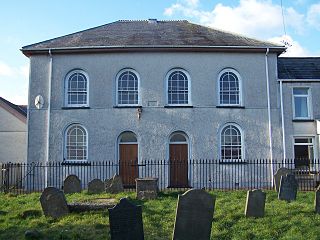
Salem, Robertstown is an Independent (Congregationalist) chapel in Bridge Street, Robertstown, Aberdare, Wales.

Penygroes is a scattered rural hamlet in north Pembrokeshire, Wales, in the northern foothills of the Preseli Mountains. It is in the parish of Eglwyswen, the community of Crymych and the Pembrokeshire Coast National Park.
Moriah Aman, Cwmaman was a Welsh Independent (Congregationalist) chapel in Fforchaman Road, Cwmaman, Rhondda Cynon Taf, Wales.
Soar, Cwmaman was a Welsh Calvinistic Methodist chapel in Fforchaman Road, Cwmaman, Rhondda Cynon Taf, Wales.
Bethania, Dowlais was a Welsh Independent, or Congregationalist, chapel in South Street, Dowlais, near Merthyr Tydfil, South Wales. The cause was established in 1824 and the chapel rebuilt on several occasions in the nineteenth century. The present chapel dates from 1895.
Ynysgau Chapel was one of the earliest chapels in Merthyr Tydfil. The cause dated back to 1749 and services were held in the Welsh language. The chapel was demolished in 1967 as part of the Merthyr Town Improvement Scheme.
References
- 1 2 3 4 "Merthyr's Chapels: Bethesda Chapel". The Melting Pot. Retrieved 9 January 2019.
- ↑ Rees, Thomas; Thomas, John (1871). Hanes Eglwysi Annibynnol Cymru, Vol. 2. p. 269. Retrieved 9 January 2019.